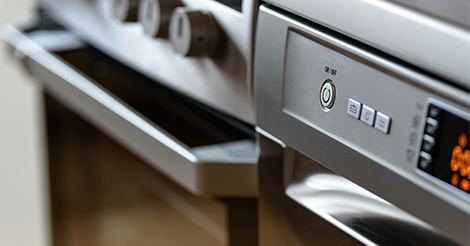As a company that sells foodservice equipment, your business requires standard inventory management and accounting software to track sales, invoice customers, and manage inventory, purchasing and the pick, pack and ship process. These types of features are fairly standard in any ERP software – Enterprise Resource Planning software - which describes an all-in-one business management solution. However, there are also certain nuances within foodservice distribution that leads to additional software requirements. These include the need to track serialized equipment and inventory, manage service and repair work (most often for warranty items), the ability to track landed costs on imported goods, barcode scanning, backorder management and eCommerce. Therefore, basic inventory and accounting software will not provide all the features necessary. Instead, look for foodservice equipment supply software with the following industry-specific functionality.
Serialized Inventory Management
Many big-ticket foodservice equipment items include a serial number. This makes it easy for the manufacturer to quickly identify a product for replacement purposes or as a means of finding compatible parts. Since serial numbers are unique, they also allow your customers to link their piece of equipment to their account in order to maintain a purchase history and for quality control and recall purposes. Inventory items can be traced from the customer to you the distributor and then back to the manufacturer.
Service and Repair (Warranty Coverage)
Foodservice distribution software with service and repair functionality is critical for your distribution business. Instead of finding a full-blown service and repair system, basic functionality such as the ability to track service orders, parts and labor, and the ability to automatically communicate maintenance reminders to customers will save you money and is all your business needs. It is important to have a system that maintains a history of work performed and can track inventory details associated with each customer. This way, customers can easily get status updates on equipment and it allows your business to accurately account for labor costs and the cost of parts.
Landed Cost Tracking
When it comes to importing large pieces of equipment, there can be a lot of fees associated with cross-border travel. Freight costs, import fees, duty, brokerage etc. can apply to individual pieces of equipment or be based on the weight of any given shipment (or both). It’s important to be able to accurately track these landed costs and assign them to the right inventory item. This helps to ensure your pricing is fair for both you and your customer and that you’re covering all the costs associated with getting inventory into your warehouse.
Barcode Scanning
Barcode scanning automates the receiving, picking, packing and shipping process to eliminate errors and increase efficiencies. The ability to scan barcodes while picking orders help to identify and fix any picking errors at the source and provides an extra layer of inspection to make sure the order is picked correctly. Scanning barcodes when receiving inventory allows you to quickly update inventory levels in your system instead of waiting for someone to manually update the information.
B2B Online Order Portal
An online order portal acts as a secure customer account and ordering system which provides information to your customers 24/7/365. Customers are able to login, see available inventory with customer-specific pricing, place an order for product and view account information such as existing orders, past orders etc. This provides another sales channel without the need to hire additional staff. Instead, once an order comes in online, it is pulled directly into your foodservice distribution software to be further processed.
Backorder Management
For large pieces of equipment, backorder management allows you to fulfill orders without having to stock large items in your warehouse that require a lot of space. Instead, if an item is not available, the system allows you to create a purchase order for the product from the sales order and then easily fulfil that sales order when the item arrives. This also allows you to track the status of any given inventory item – available in your warehouse, allocated to an order, on backorder, etc.










